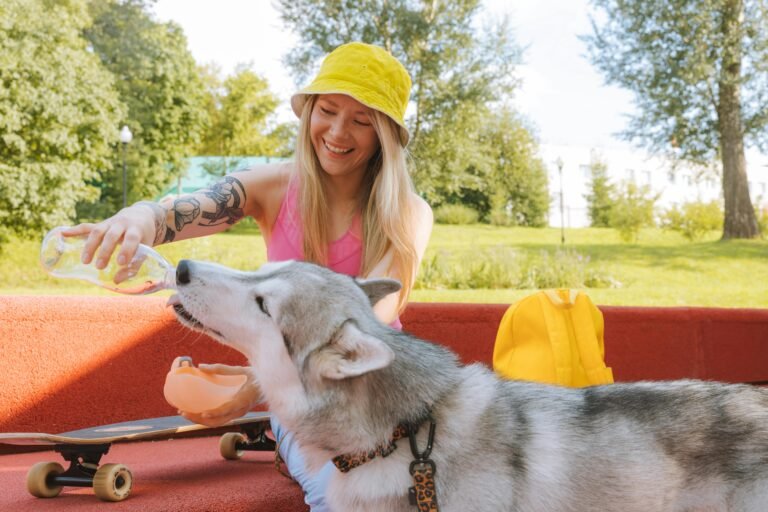Understanding Calming Signals
Calming signals are subtle behaviors that dogs exhibit to communicate their emotional state, particularly when they experience stress, anxiety, or discomfort. Recognizing these signals is crucial for dog owners, as it helps foster better interactions and enhances the overall relationship between the dog and its handler. Through understanding calming signals, owners can respond appropriately to their pets’ needs, ensuring a more harmonious home environment.
These signals serve as a form of silent communication, allowing dogs to convey their feelings without resorting to more aggressive or overt behavioral expressions. Common calming signals include yawning, licking lips, turning away, and maintaining a low posture. Each of these behaviors indicates that the dog may be feeling overwhelmed or anxious, and they often seek to alleviate their discomfort by signaling to their human companions and other animals. This type of communication is fundamental not only for the well-being of the dog but also for the owner’s understanding of their pet’s emotional landscape.
It is crucial to differentiate calming signals from other canine behaviors. For example, while a dog’s wagging tail can indicate happiness or excitement, it may also signal agitation, depending on the context. On the other hand, calming signals are specifically tied to emotional regulation and acts of appeasement. Recognizing these subtle distinctions allows owners to interpret their dog’s behaviors more accurately and respond with compassion and understanding. By being attuned to these important cues, dog owners can create a supportive environment that reduces their dog’s stress, promotes trust, and enhances the bond shared between them.
Common Calming Signals and Their Meanings
Dogs, like humans, experience a range of emotions, and they often communicate their feelings through subtle behaviors known as calming signals. These signals are crucial for dog owners to recognize, as they can indicate stress, anxiety, or discomfort. Understanding these behaviors allows owners to respond appropriately, fostering a more harmonious relationship with their pets.
One of the most common calming signals is yawning. While yawning can sometimes indicate tiredness, it often serves as a way for dogs to calm themselves in stressful situations. For instance, if a dog yawns in a crowded or noisy environment, it may be trying to self-soothe. Similarly, lip licking is another significant signal; when a dog repeatedly licks its lips, it typically reflects anxiety or uncertainty. This behavior often occurs before or during stressful events, such as a visit to the veterinarian or when encountering unfamiliar dogs.
Turning the head away is another calming signal that indicates a dog’s desire to de-escalate a situation. When a dog turns its head or body away, it is usually trying to signal that it does not wish to engage further, conveying feelings of unease or discomfort. Additionally, body language postures such as lying down or moving away from a perceived threat are notable calming signals. A dog that lies down with its belly exposed may be showing submission and a desire to avoid confrontation, while a dog moving away from something that unnerves it is demonstrating a clear discomfort.
Recognizing these calming signals is essential for dog owners, as it equips them with the knowledge to better interpret their dog’s emotional state. By being attuned to these behaviors, owners can provide support and reassurance, thereby enhancing the overall well-being of their canine companions.
How to Respond to Calming Signals
Understanding how to effectively respond to your dog’s calming signals is essential for fostering a trusting and secure environment. Recognizing the subtle cues your dog provides—such as turning their head away, lip licking, or avoiding direct eye contact—can significantly influence their emotional state. When a dog exhibits these signals, it is crucial to approach the situation with sensitivity and care.
One of the primary techniques is to avoid direct confrontation with your dog. Forcing interaction during moments of stress can escalate their anxiety and lead to adverse outcomes. Instead, allow your dog the space they need to decompress. This might involve stepping back, reducing noise levels, and creating a calm atmosphere in their environment. Such an approach not only respects the dog’s feelings but also conveys that they can retreat safely without fear.
Providing positive reinforcement when your dog displays calm behavior can be highly beneficial. Rewarding your dog with treats, praise, or affection encourages them to engage in these calming behaviors more frequently, reinforcing their ability to manage anxiety. Additionally, incorporating calming activities into your routine can help alleviate stress. Activities like gentle walks, obedience training, or even relaxing music can provide a comforting structure that amplifies your dog’s sense of security.
Understanding your dog’s triggers is also vital in responding to their calming signals. Keeping a journal of instances when your pet displays anxious behaviors can illuminate patterns and help you devise strategies to mitigate those triggers. By being proactive rather than reactive, you can create a more harmonious relationship with your dog, enabling both of you to navigate the challenges of anxiety together more effectively.
Training Your Dog to Be More Comfortable
Training your dog to feel more comfortable within their environment is crucial for their well-being and for cultivating a strong bond between pet and owner. Several effective techniques can be employed to achieve this goal, each designed to reduce anxiety and make your dog feel secure in various situations. One of the most widely recognized methods is desensitization to triggers that may cause fear or discomfort. This involves gradually exposing your dog to specific stressors in a controlled manner while ensuring positive experiences are associated with these encounters.
Another key approach is positive reinforcement training, where desired behaviors are rewarded. This technique not only helps alleviate anxiety but also encourages your dog to act calmly in situations that typically provoke stress. For instance, rewarding your dog with treats or praise when they respond calmly to stimuli, such as loud noises or unfamiliar environments, reinforces a sense of security. Additionally, the creation of a predictable routine can significantly enhance your dog’s comfort levels. Dogs thrive on structure, and establishing a regular schedule for feeding, walks, and playtime can foster a feeling of stability.
It is critical to approach this training with patience and consistency. Dogs, like humans, need time to adapt to changes and overcome their fears. Being overly demanding or impatient could lead to frustration and setbacks in the training process. Keep training sessions short and enjoyable, allowing your dog sufficient time to absorb the lessons being taught. In doing so, owners can observe transformed behaviors, leading to a more relaxed and confident dog. Ultimately, enhancing your dog’s comfort not only improves their quality of life but also fosters a peaceful household, benefiting both the dog and their owner.






